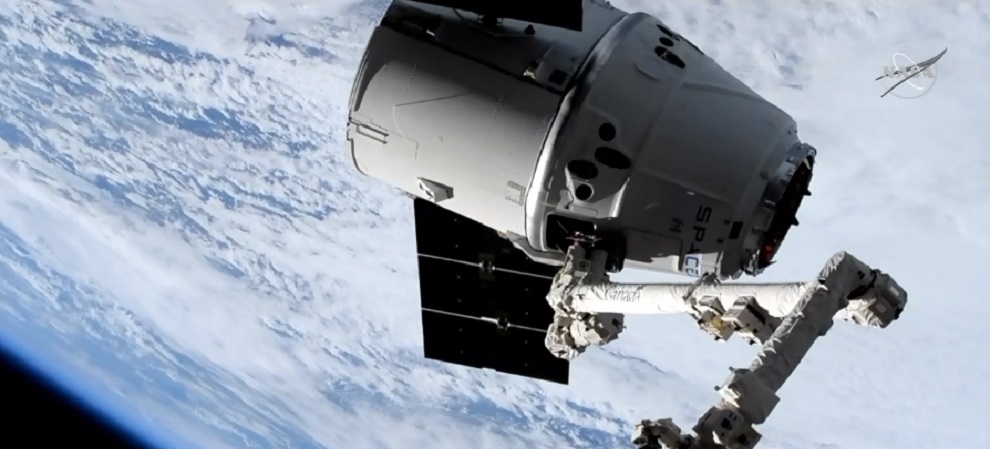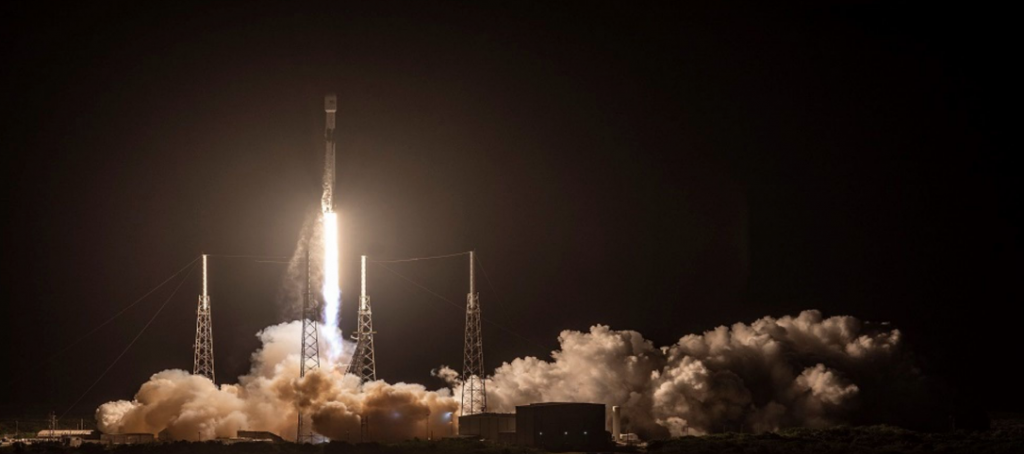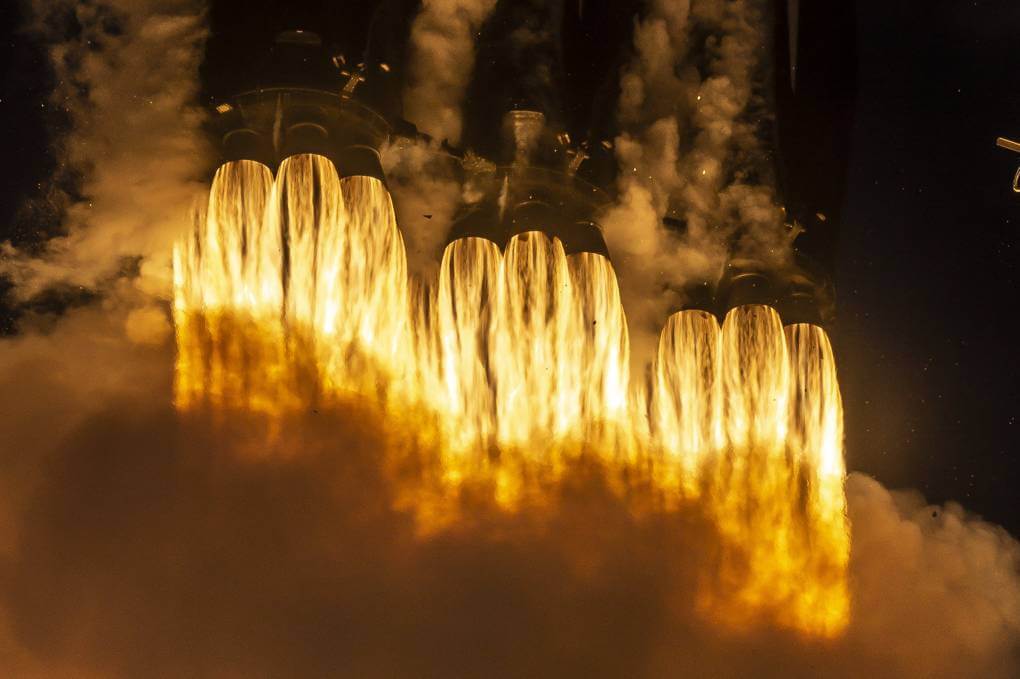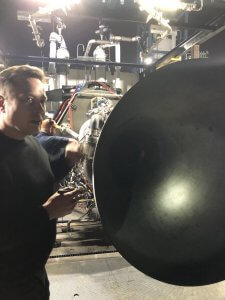 How to reduce the epic adventure of SpaceX into just a few paragraphs. One might think that focusing on 3D printing might do it, but not really: the company has headlined many news outlets with 3D printing innovations. It’s all a big part of Elon Musk’s long resume full of exceptional inventions often referencing something that has appeared in fiction, like electric autonomous cars, traveling to space, developing artificial intelligence, and even trying to augment human brain’s capabilities. Musk’s plans got even bigger as the years go by; he even teased about making his own Iron Man suit when he was at a meeting with Secretary of Defense Ash Carter at the Pentagon in 2016, saying “Something about a flying metal suit…” on his Twitter account.
How to reduce the epic adventure of SpaceX into just a few paragraphs. One might think that focusing on 3D printing might do it, but not really: the company has headlined many news outlets with 3D printing innovations. It’s all a big part of Elon Musk’s long resume full of exceptional inventions often referencing something that has appeared in fiction, like electric autonomous cars, traveling to space, developing artificial intelligence, and even trying to augment human brain’s capabilities. Musk’s plans got even bigger as the years go by; he even teased about making his own Iron Man suit when he was at a meeting with Secretary of Defense Ash Carter at the Pentagon in 2016, saying “Something about a flying metal suit…” on his Twitter account.
The billionaire and serial inventor has revolutionized the future of spaceflight, space colonization, as well as the economy of low Earth orbit and beyond. Last May, Air Force General Terrence O’Shaughnessy even said that Elon Musk’s SpaceX may have completely changed the ability to sense threats against America using satellite clusters in space. The exact expression was: “Holy smokes. Talk about being able to move the ball”. Yep, he actually said that about the launch of 60 small satellites by SpaceX at one time.
The company, which was founded in 2002, designs, manufactures and launches advanced rockets and spacecraft, with the ultimate goal of making interplanetary human life possible. The South African-born businessman has publicly talked about venturing to Mars for over a decade, with plans of building a greenhouse on the Red Planet and, more ambitiously, establishing a colony.
The total journey time from Earth to Mars takes between 150 to 300 days depending on many factors, like the speed of the launch, the alignment of Earth and Mars, and how much fuel you’re willing and able to burn to get there. However, the scientists and engineers behind SpaceX are making the tour de force seem closer with every rocket launch, 3D printed engine, and orbit shuttle in development. Perhaps it all sounds too optimistic, as the years go by and SpaceX has had a few setbacks along the way, but the continuous flow of NASA contracts are pushing the company into some serious research and development of some out of this world initiatives (literally, of course), especially in 3D printing.
The truth is that whether it’s building bases with lunar dust or Mars sand, 3D printing CubeSats, taking bioprinters to space, or actually sending the first crewed missions to the Red Planet with 3D printing capabilities on board, this new space race will be building the next generation of customizable products for use in orbit and on Earth, with SpaceX leading the way.
Morgan Stanley estimates that the global space industry could generate revenue of more than $1 trillion by 2040, up from $350 billion, and SpaceX could be one of the biggest players of the industry. SpaceX, along with competitors Blue Origin, Slingshot Aerospace, Rocket Lab and Relativity Space, have raised billions of dollars to create new rockets for launch to orbit.
“Through 3D printing, robust and high-performing engine parts can be created at a fraction of the cost and time of traditional manufacturing methods,” said Musk, Chief Designer and CEO of SpaceX, back in 2014 during the announcement of the completed testing of the SuperDraco thruster, an engine that will power the Dragon V2 spacecraft’s launch escape system and enable the vehicle to land propulsively on Earth or another planet with pinpoint accuracy, and turned out to be the first fully printed rocket engine to ever see flight.
“SpaceX is pushing the boundaries of what additive manufacturing can do in the 21st century, ultimately making our vehicles more efficient, reliable and robust than ever before,” Musk suggested.
High-performing rocket parts can be created using 3D printing and offer improvements over traditional manufacturing methods. SpaceX is pushing the boundaries of what additive manufacturing can do hoping to make the Falcon 9 rocket and Dragon spacecraft more reliable, robust and efficient than ever before.
In 2014, SpaceX launched its Falcon 9 rocket with a 3D printed Main Oxidizer Valve (MOV) body in one of the nine Merlin 1D engines. According to the company, the mission marked the first time SpaceX had ever flown a 3D printed part, with the valve operating successfully with high-pressure liquid oxygen, under cryogenic temperatures and high vibration.
SpaceX claimed that compared with a traditionally cast part, a printed valve body has superior strength, ductility, and fracture resistance, with lower variability in materials properties. The MOV body was printed in less than two days, compared with a typical castings cycle measured in months. The valve’s extensive test program – including a rigorous series of engine firings, component-level qualification testing and materials testing – has since qualified the printed MOV body to fly interchangeably with cast parts on all Falcon 9 flights going forward.
Another great example of how the company has been experimenting with 3D printing came with SpaceX’s SuperDraco thrusters, which were 100% 3D printed. The engine powered the Dragon spacecraft’s launch escape system and enabled the vehicle to land propulsively on Earth (and potentially on another planet in the future) with pinpoint accuracy. It was manufactured using state-of-the-art direct metal laser sintering (DMLS, Powder bed fusion), and the chamber was regeneratively cooled and printed in Inconel, a high-performance superalloy that offers both high strength and toughness for increased reliability.
SpaceX has been focusing on getting humans to Mars, which means they are building their reusable launch system, the Starship spacecraft. It will be powered by the Raptor engine, which is the highest thrust to weight engine ever made, as well as one of the first to go by methane and designed to be reused 1,000 times. According to SpaceX, the manufacturing process includes quite a few 3D printed parts allowing to reduce costs and making the production of lighter parts possible. The printed components include propellant valves, turbopump parts and parts of the injector system.
Some of the main challenges facing the company go from making light spaceships to efficient engines and even perfecting propulsive landing. In this regard, 3D Printing allows for a great reduction of production costs and enhances the thrust to weight ratio of the engines since it enables the production of lighter parts not possible through traditional methods. Another additional advantage of 3D printing engine components is the speed at which the design changes can be implemented, making the teams move faster through the iterations to achieve the desired output and in a shorter time span, compared to the weeks, or even months, it could take otherwise.
For many years, SpaceX has been evaluating the benefits of 3D printing and perfecting the techniques necessary to develop flight hardware, achieving some major successes along the way and even cooperating with other companies to take 3D printing system capabilities to orbit. With the additive manufacturing industry coming such a long way in the past decade, we can expect the company to continue working with the technology in achieving some of the incredible results it has up to now and continue to enlighten us with their vision of going to space. Keeping our faith that perhaps, in the future, we could all be part of the travel adventure of a lifetime, one that SpaceX began exploring 17 years ago.
[Images: SpaceX unless otherwise noted]Subscribe to Our Email Newsletter
Stay up-to-date on all the latest news from the 3D printing industry and receive information and offers from third party vendors.
You May Also Like
3D Printing Unpeeled: New Arkema Material for HP, Saddle and Macro MEMS
A new Arkema material for MJF is said to reduce costs per part by up to 25% and have an 85% reusability ratio. HP 3D HR PA 12 S has been...
3D Printing News Briefs, January 20, 2024: FDM, LPBF, Underwater 3D Printer, Racing, & More
We’re starting off with a process certification in today’s 3D Printing News Briefs, and then moving on to research about solute trapping, laser powder bed fusion, and then moving on...
3D Printing Webinar and Event Roundup: December 3, 2023
We’ve got plenty of events and webinars coming up for you this week! Quickparts is having a Manufacturing Roadshow, America Makes is holding a Member Town Hall, Stratafest makes two...
Formnext 2023 Day Three: Slam Dunk
I’m high—high on trade show. I’ve met numerous new faces and reconnected with old friends, creating an absolutely wonderful atmosphere. The excitement is palpable over several emerging developments. The high...





































